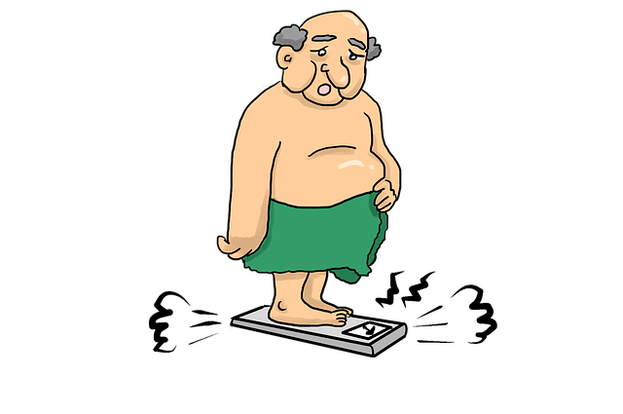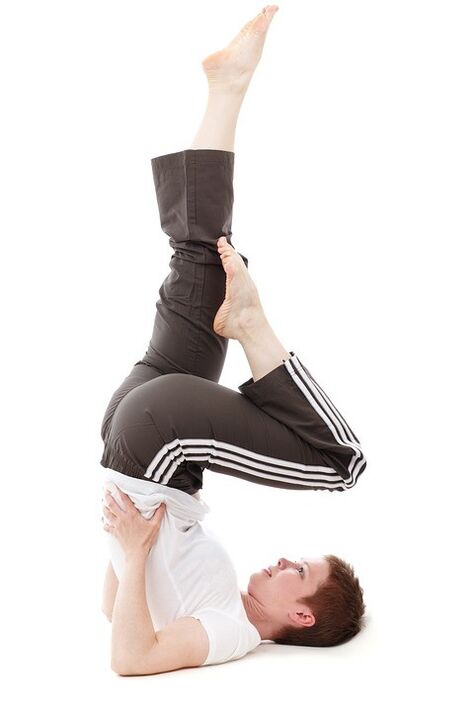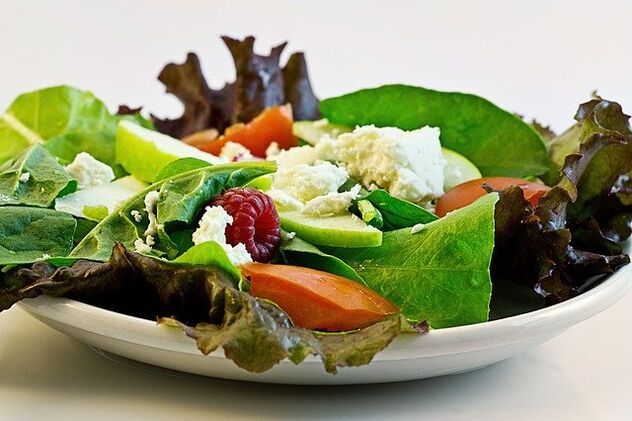Osteoarthritis is a group of diseases arising from many different causes, but the clinical manifestations and the same development. The heart of all joint diseases is the defeat of the components of the joint. Osteoarthritis is a progressive disease with impaired function of the affected joint. Osteoarthritis of the knee (gonarthrosis) is a disease in which cartilage, synovial membrane, ligaments, and muscles around the knee joint are damaged. Osteoarthritis of the knee, which requires an integrated approach, also needs your attention. And at least have a rough understanding of why and how the disease progresses.
Gonarthrosis: the cause
Causes of dry joints of the knee joint can be:
- Injury to joints: According to the scientific literature, about a third and possibly half of all joint injuries have been previously injured. A person may accidentally stumble on the road, or damage a joint while playing sports. The pain will be acute first, and then it will be dull and slightly achy, but it won't cause much discomfort. Usually, in most cases, the joint will heal itself soon and show no signs of damage. But in rare cases, this adverse coincidence can provoke the development of joint disease.
- Long-term joint overload: It is believed that those whose occupations involve prolonged excessive stress on joints (professional athletes, postmen) may face the development of inflammatory disease. early joints.
- Arthritis (arthritis of the knee): when the joint becomes inflamed, biological and morphological changes occur, the blood flow is disrupted, thus, arthritis causes dry joints (secondary fibrosis of the joints).

Additional risk factors
- Genetic. Usually, dry arthritis is not directly inherited, but the "catalyst" in the development of joint disease can be specific to the metabolic process, the structure of cartilage tissue, just hereditary. Additionally, joint capacity can occur if a person has joint abnormalities or poor development, or trauma at birth.
- Overweight. Overweight is a "worsening" situation in the development of joint disease: that is, it is not directly related, but weight gain has a huge load. It must be remembered that in obese people, the degenerative knee joint condition is more severe than others.
- Chronic stress. It is a well-known fact that in the case of overexertion, the adrenal glands secrete "stress hormones", as they impair blood supply and reduce production of hyaluronic acid, a key ingredient for activity. normalization of joints. Due to the aforementioned chronic stress and severe situations, joint disease is possible.
Symptoms of gonarthrosis disease
- Pain. One of the primary and primary symptoms of osteoarthritis is pain in the knee joint. It is worth noting that knee pain only occurs with exertion: walking, running, squatting, lying down, this pain will go away, after a while will be completely gone (until the movement continues).
- Cracking sound in joints. Contrary to the "scratching" of the joints of healthy people, the cry of joints affected by dryness has a different tone: rough and "dry".
- Stiffness. Grade 1 osteoarthritis usually does not exhibit as much stiffness as subsequent grades. But as the disease progresses, the range of motion of the affected joint is significantly reduced.
- Deformed knee joint. With the progression of gonarthrosis disease, pathological formation develops in the osteoarthritis spines. It is because of them that the appearance of the joint may differ from that of a healthy joint. In addition, the appearance of the joint can be somewhat "bulky", this is due to an excessive buildup of fluid in the joint (bursitis).

The degenerative process of the knee joint
Osteoarthritis of the knee more commonly affects women than men. The disease usually progresses after the age of forty, but it sometimes occurs earlier, usually after trauma and in professional athletes. As we wrote earlier, the progression of gonarthrosis is more complicated and severe, in obese women, as well as in people with severe varicose veins.
The disease begins with the appearance of mild pain in the knee. Usually, pain occurs when a person has to stand on their feet for a long time, when going down and up stairs. When a person lies down, the pain goes away, but when you need to get up, the first steps become very painful for him.
There are three degrees of osteoarthritis of the knee joint
Osteoarthritis of the knee 1 degree
Grade 1 osteoarthritis is characterized by sometimes severe pain in the knee, and the bones that form the knee joint have not yet formed, but due to bursitis, the knee appears slightly swollen. If there is too much fluid in the joint, it can spread to the socket. This condition is called a Baker cyst. If you have been confirmed like this then you do not need to worry too much, this is not cancer, it is reduced under the action of drugs prescribed by your doctor.
Degenerative knee joint degeneration 2
Degenerative knee osteoarthritis begins 2-3 months after the onset of illness. During this time, knee pain is usually worse. This pain no longer occurs simply during exertion but comes with any movement of the patient. Usually at this point, a pronounced clumping noise in the knee "joins" the pain in the joint. Grade 2 knee fibroids, in addition to the intense pain and scratching noise, also reduces the ability to stretch the legs in the knee joint. Joint deformation is manifest immediately: bone structures change shape, when palpable joints become stiff and "rough".
Arthritis of the knee grade 3
Degenerative knee osteoarthritis is characterized by intense, continuous pain, and it is difficult for the patient to even lie on his stomach: forced to find a resting position. Knees become sensitive to weather changes, aches and pains begin at night. Degenerative knee osteoarthritis accompanied by reduced ultimate mobility, the patient cannot bend the leg in the knee joint more than 90 °. Sometimes, with level 3 gonarthgo, where the legs are not fully straightened, the person has to walk on slightly bent legs. In some cases, the deformity of the leg develops in an O or X-shape. In severe cases, a high degree of degenerative joint disease is required to work.
Knee Gonarthrosis: treatment. It is important to know when treating a knee joint with medication
Although there are many advertisements that promise a miracle drug for joint pain, you need to understand that it is impossible to cure gonarthrosis by any means, it is necessary to have a synthetic approach.
If you notice the first signs of joint disease, you need to see your doctor as soon as possible. This could be a joint doctor, rheumatologist, orthopedic doctor, or, first of all, a general practitioner.
Knee: Treatment of NSAIDs
So how to cure osteoarthritis of the knee? Usually, for the treatment of joints, non-steroidal substances (non-hormonal) are used to reduce the inflammatory process in the joints. Fibromyalgia is treated with drugs that can provide fever-reducing and pain-relieving effects. Remember, drugs in this group should not be taken at all times. they have the ability to "mask" the symptoms of the disease. Please note: do not self-medicate, act only under the guidance of a competent specialist who may prescribe treatment for you, based on your body's individual parameters, taking into accountCases of contraindications to the use of the drug.
In recent years, new generation drugs have been used in practice: they are selective agents with effects similar to NSAIDs, but cause less of the unpleasant side effects and do not cause complications.
Arthritis of the knee: treatment with drugs that protect the knee
When you have osteoarthritis, you can drink substances that help nourish the cartilage tissue of the joint and restore the joint's structure. These drugs are protective chondroprotectors. Such drugs are most effective if you have grade 1 gonarthrosis of the knee joint, since with extreme gonarthrosis, there is almost nothing to recover: all cartilage is practically destroyed. To get the effect of chondroprotectors, it is necessary to use them for a long time: at least 2-3 courses of treatment, usually takes a year and a half. Remember, although there are some contraindications to this group of medicinal substances, their use should be with the consent of a doctor.
Knee: treatment with vasodilators
Vasodilators are a good complex therapy in the treatment of arthritis. They help restore joints by improving blood flow and reducing small vasoconstriction. An interesting bonus in the treatment of dry joint of the knee, including vasodilators, may be the elimination of nocturnal pain in the damaged joint. If you want to achieve the maximum therapeutic effect, vasodilators are best used chondroprotectors, so that the nutrients of the chondroprotectors will seep into the joints in more numbers and will circulate more actively in them. Remember, the use of any medicinal substance requires the cooperation of a doctor.
Arthritis of the knee: ointments and creams
Ointments for arthritis are often used by marketers as a trap for desperate patients. Remember that a severe knee ointment will not be effective, but in the early stages, creams and ointments can significantly reduce this condition. Analgesic ointments can be used to improve circulation to the joints. Such drugs help to eliminate painful spasms in the joints, increase blood circulation. Alternatively, you can use ointments based on bee and snake venom. These ointments have a stimulating effect that increases blood circulation in the damaged joint. Remember, many poison-based ointments can cause an allergic reaction, so only a specialist should allow them to be used.
Therapeutic exercises for dry joints of the knee joint
Physiotherapy for osteoarthritis is an effective treatment that combines medication and physical therapy.
You must remember that gonarthrosis therapy exercise is the main treatment because we cannot strengthen the muscles and blood vessels of the knee joint and activate the blood supply with any medicine. In addition, fitness is the most cost-effective and most effective treatment that does not require unnecessary physical expenses.

But need to do complex therapy exercises for joint disease deliberately: don't rush to do 200 squats or 100 kicks a day. Under no circumstances should you provide a high-intensity dynamic load and instead of active stretches, do static exercises. Unfortunately, most patients don't like just static exercises, as they consume the most energy and are most tiring, but if you can hold out for 2-3 weeks, exercise regularly, you won't just improve. get the condition of the knee joint. , but also find the increase in power and performance increase.
How to do it correctly
The exercises should be done very smoothly and gently, stretching ligaments and joints with light pressure. Do not let severe pain while exercising. Aim for slow and steady, do not rush things: the expected effect will only be achieved with moderate continuous effort.
Remember that strength exercises should not be used early after surgery on the abdominal and thoracic organs, for fever, critical days in women. Necessary not only to pay attention to the joints, but also to exert force on the muscles of the abdominal and back pressures. This is imperative so that the main blood flow to the extremities is through the muscles in the abdomen and back.
Complex exercises are available for free on the Internet, try to do a variety of exercises for 30-40 minutes a day, according to our guidelines.
I wish you the perseverance and willpower to return the comfort of your previous movement!
Physiotherapy for dry joints of the knee joint
If you ask if it is possible to use physical therapy to treat osteoarthritis, we will answer - it certainly is!
Osteoarthritis of the knee: treatment - laser therapy
Laser therapy is the use of light beams for therapeutic purposes, including ultraviolet, infrared, and red spectrum radiation. Effects of laser have anti-inflammatory, decongestant and analgesic effects. Typically, laser therapy consists of 15 sessions. Laser treatment is a relatively safe treatment, but it is not possible to cure the joint with a single laser, which is an additional treatment.
Arthritis of the knee: treatment - cold pressure
The method of cryotherapy is the act of local cooling of the joint. There are two methods of cryotherapy: using an air conditioner and applying liquid nitrogen directly to the joint. It is believed that the following method is the most effective for dry arthritis of the knee joint. With the help of cryotherapy, it is possible to improve the blood supply to the joints, improve metabolism and reduce muscle spasm. The course of treatment is usually 10-12 sessions daily.
Osteoarthritis of the knee: treatment - acupuncture therapy
Magnetic field therapy - exposure to magnetic fields. A method of physical therapy is quite common in treatment in hospitals and clinics. Exposure to magnetic fields has anti-edema effects, stimulates non-contact electromechanical stimulation and reduces arthritis. The course of treatment is prescribed by a doctor - a physiotherapist technician.
Osteoarthritis of the knee: treatment - ultrasound therapy
Therapeutic ultrasound - sound wave therapy. Ultrasound for joint disease improves blood supply, reduces muscle spasm and has analgesic effects. To enhance the therapeutic effect of the ultrasound, a drug is applied to the affected joint. With the help of ultrasonic waves, the drug penetrates the tissues more easily.
Arthritis of the knee: heat treatment
The hot compress method to treat osteoarthritis is applied in phase 1 - 2 of the disease. This method includes treatment with ozokerite, paraffin, and sludge. The latter deserves special attention: mud joint treatment can be done at home. It is necessary to dilute the healing sludge with water and heat to 60 °, then mix the resulting mass with the unheated sludge, allow to cool to 38-42 ° and apply a 2-3 cm thick layer on the affected joint. affect. Cover the mixture with an oil towel and a warm blanket. Leave on for 30 minutes. Conduct the daily therapy with 10 to 12 courses.
Diet and herbal medicine for arthritis of the knee
Diet for joint disease is an important factor in successful treatment. But we must understand that the development of joint disease is not related to any particular dietary characteristic, but it is the excess weight that contributes to the occurrence of lower limb joint disease. However, you need to lose weight properly: there are no cases of fasting or harsh diets, because, as you know, after quitting the harsh diet, the weight will increase again, and oftenis in larger quantity.

We need to know that being overweight is also a disease, but it can and should be treated. With obesity, the regulation of appetite and satiety centers is disturbed, but can "guide them on the right track. "
First, you need to realize that there is a problem often related to poor eating habits. Second, you need to learn to set realistic goals for yourself. A 10-15% weight loss from the original is a great result. Believe me, even if you lose even 5% of your original weight, you'll feel immediately relieved: your blood pressure drops, and the condition of your joints improves.
Weight loss goal
In any case, if you have set yourself a weight loss goal, then you will have to reconsider your diet, composition and amount of food consumed. Cut down on candies, pies and all "fast" carbohydrates.
For starters, we recommend trying a simple one. Prepare your regular diet by putting your usual portion sizes on the plate. Now, eat only half of the food on your plate. You will soon find that you are only eating whole portions of the habit, even though you need very little to satisfy your hunger. Even if you are hungry, slowly eat half a serving and rest for 10 minutes. You will be surprised that after this time, you simply don't want to eat the rest: the hunger is gone, and with it a frantic desire to eat everything. After two months like that, you should see a noticeable result. Try it!
Along with the correct absorption of food, one must not forget to drink adequate amounts of fluids. People without severe heart and kidney disease, as well as those without edema, can safely increase their water intake up to 2 liters per day.
Alternative treatment for dry joints of the knee joint
Herbal medicine for joint disease. It is important to note that the infusions and decoctions for joint disease are less weak than the methods above, but they can provide a relative benefit.

During the month, you can take one of the following fluids:
remember to just drink each infusion or decoction separately, then change to another drug. Don't drink it all at once!
Aries water for joint disease
Excellent water from birch birch plants: Pour 1 teaspoon of birch buds with a cup of boiling water, boil the mixture over low heat for 15 minutes, incubate for 1 hour, cover with a warm lid. After an hour, you need to filter and add the broth with boiled water to its original volume. Drink a quarter (1/4) cup infusion 4 times a day, one hour after meals for one month.
Infusion of Linden for joint disease
Infusion of flowers for arthritis: Pour 3 tablespoons of flowers with a cup of boiling water, boil over low heat for 15 minutes, let cool and filter to get water. Drink warm fluids 1 glass 3 times a day after meals for 3 weeks.
Burdock juice for arthritis treatment
Burdock juice for arthritis: Pour 1 teaspoon burdock root with 1 cup of boiling water, simmer for about 30 minutes, stir frequently, then let the broth cool at room temperature and filter. Heat the broth in half (1/2) cup 3 times a day before eating for a month.
Infusion for the elderly for arthritis
Infusion for the elderly for arthritis treatment: 2 tablespoons of gray wine (Alnus incana) must be poured with 1 glass of boiling water, kept on low heat for 15 minutes, then let cool and filtered. Drink one-third (1/3) of the alder conical infusion cup 3 times a day for half an hour before eating for a month.
Collection of medicinal herbs for treating joint diseases
Collection of joint medicine: mix two equal parts of willow bark, parsley root, elderflower and nettle leaves, and chopped. Pour 4 tablespoons of the mixture with 1 liter of boiling water and boil over low heat for 5-10 minutes, then leave for 2 hours and drain. Drink half a glass in half a glass 4 times a day for half an hour before eating. The course of treatment is 1 month.
Conclusion
Despite the fact that joints are a very uncomfortable disease, when faced with it, it is necessary to draw the right conclusions about the disease, reduce negative emotions, start fighting for physical health andComprehensive spirit, following the recommendations we have proposed. Then you will definitely defeat the disease!






























